Nutcrackers for Collectors




This first image is of a painting, Lorenzo and Isabella, 1849 by Millais (1829-1896). I've included it here because it is one of the few period paintings that depicts a nutcracker. The chap seated front left, wearing white tights, is holding a wooden (treen) lever nutcracker. Millais was part of the late 19th century English group of Pre-Raphaelite painters and the painting, based on a Keats poem, is set in medieval times. However, this doesn't make it a really reliable source for dating nutcrackers. It is currently in the Walker Art Gallery in Liverpool.
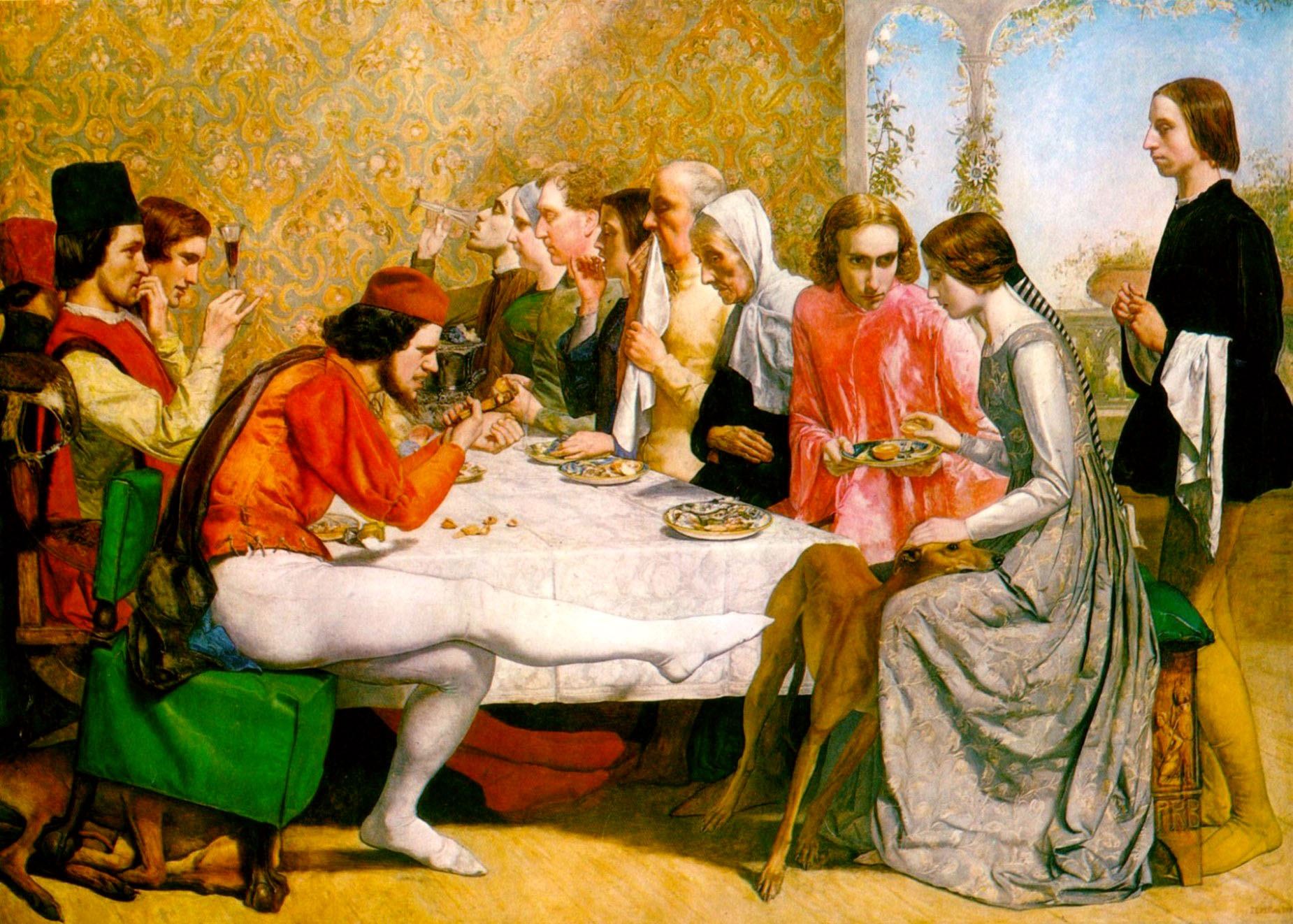
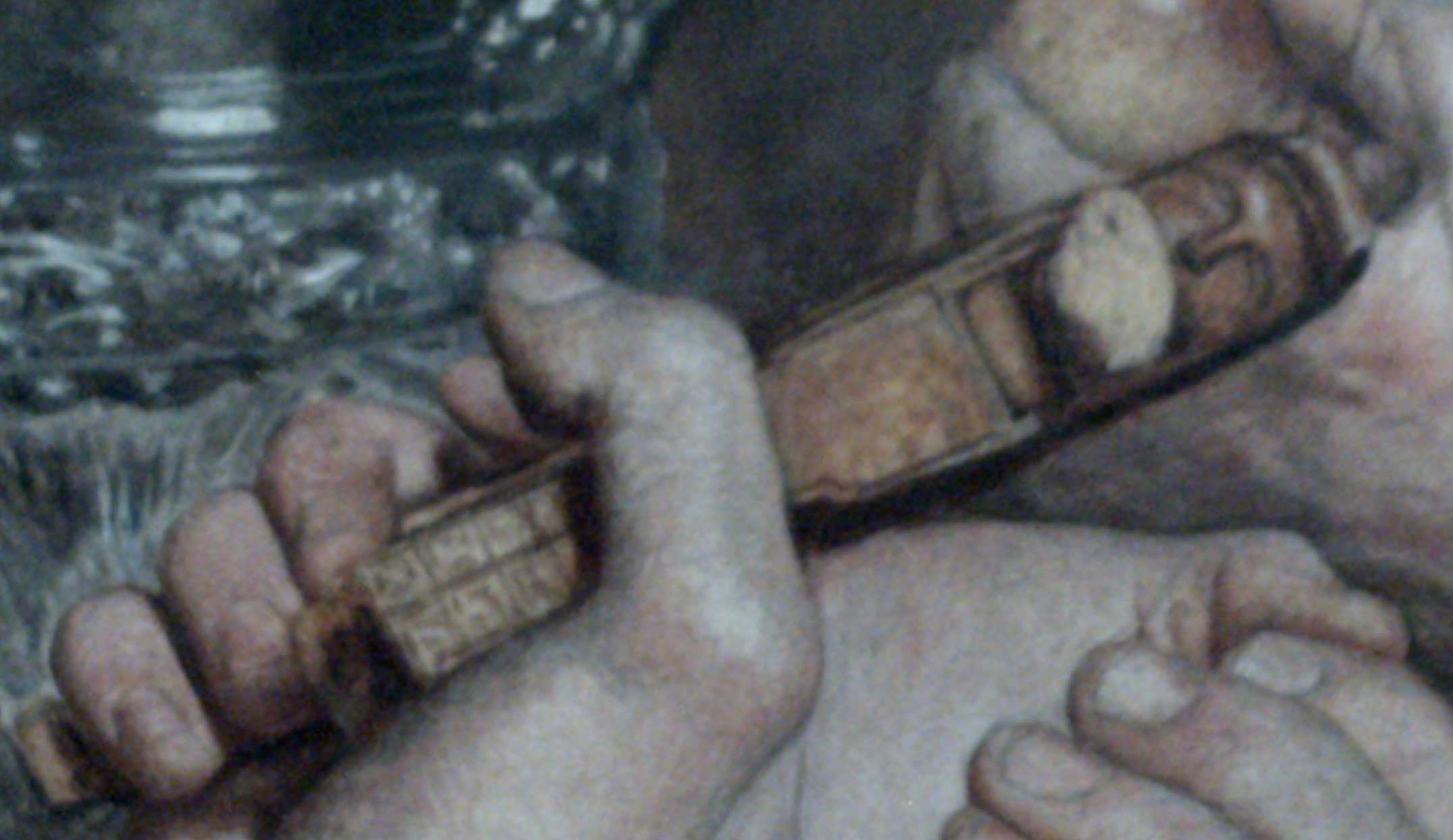
The oldest nutcracker that I'm aware of is in a museum in Tarent, Italy. It dates to the 3rd/4th century BC and is in the form of a pair of hands. The Leavenworth museum (who I thank for permission to reproduce this image) owns the following nutcracker which is Roman, dating to between 200 BC and 200 AD. It was excavated in the 1960s.
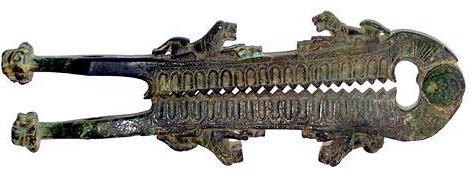
Dated nutcrackers are quite rare, the earliest one I'm aware of is in the Leavenworth Museum and is dated '1569'. The dates on the following examples are relatively reliable :

Welsh steel nutcracker dated 1843.

This is the earliest known dated (1631) screw nutcracker, it is English and made of boxwood.
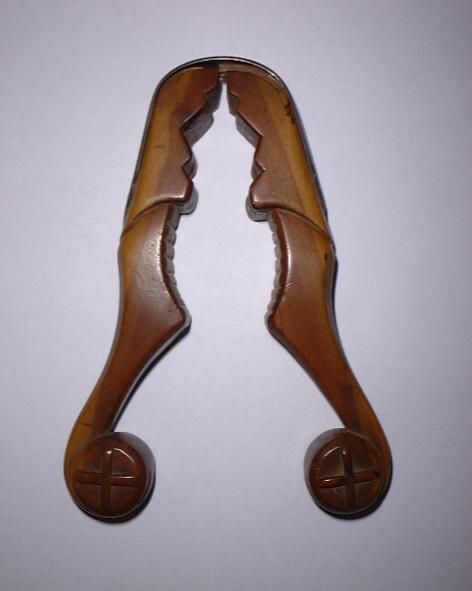
This example is un-dated but copies of this bent-wood English nutcracker exist with the date '1879' at the lever ends.
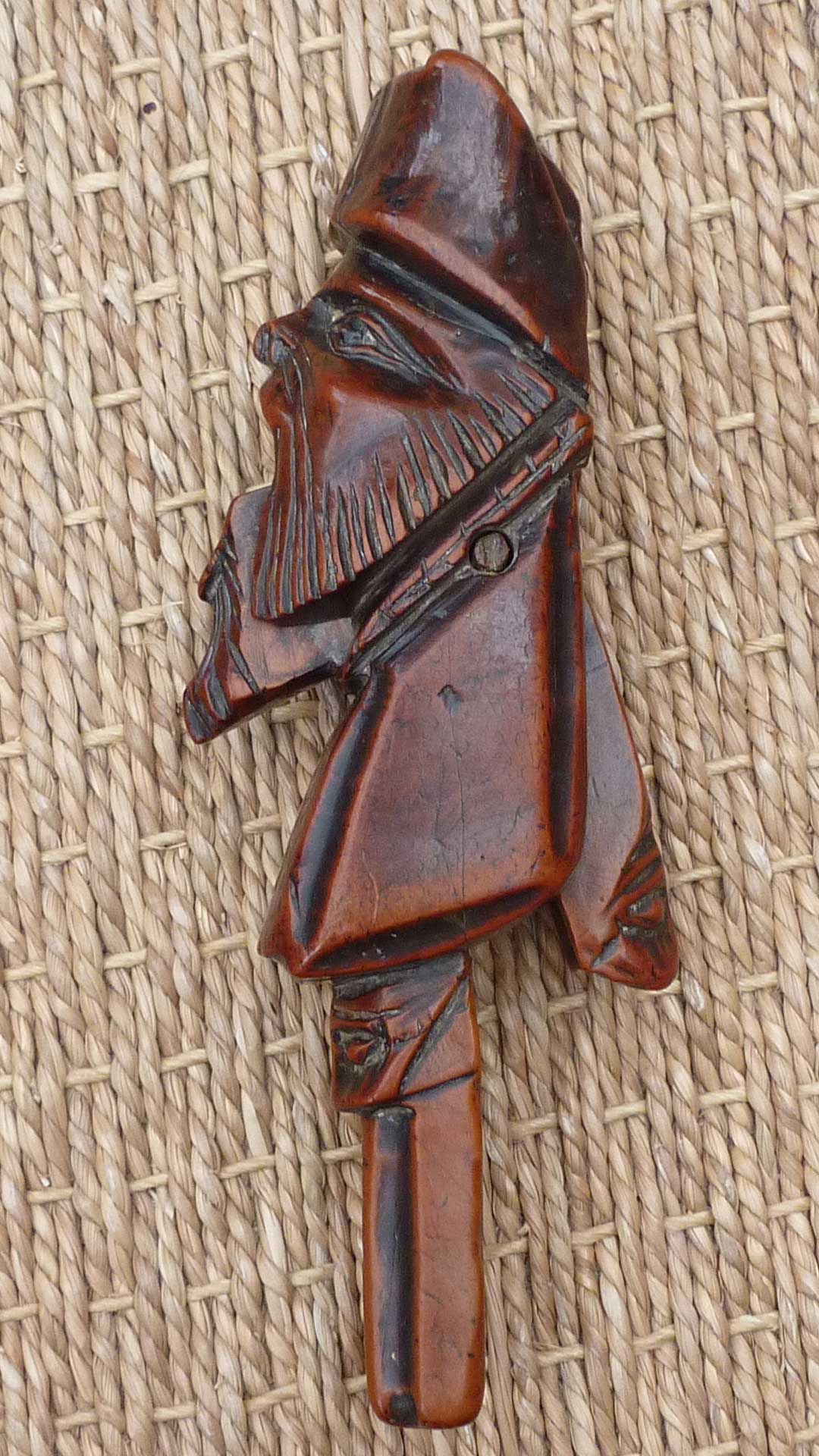
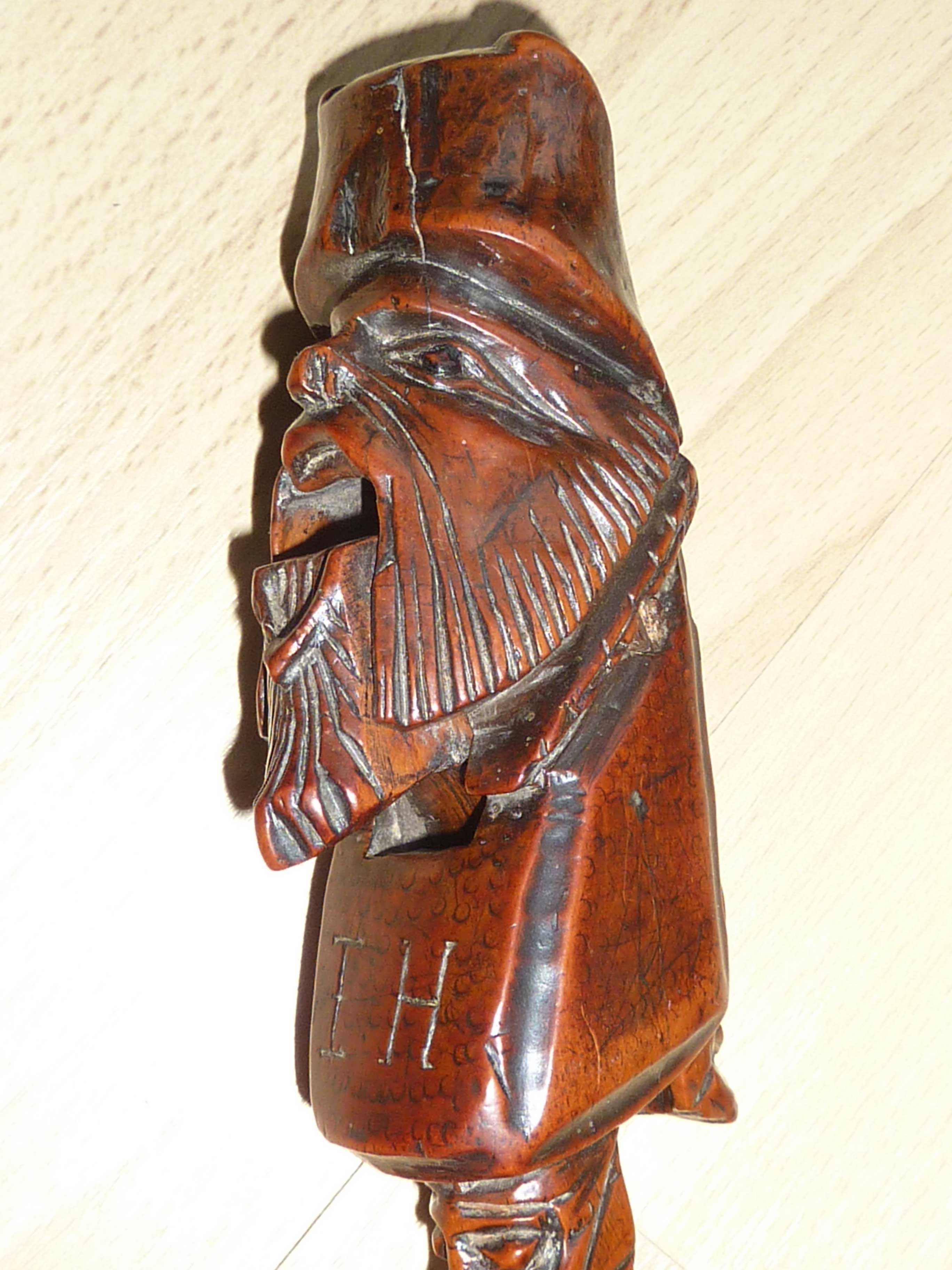
A rare 16th Century English cracker initialled "I H" which has sadly lost most of its rear lever.
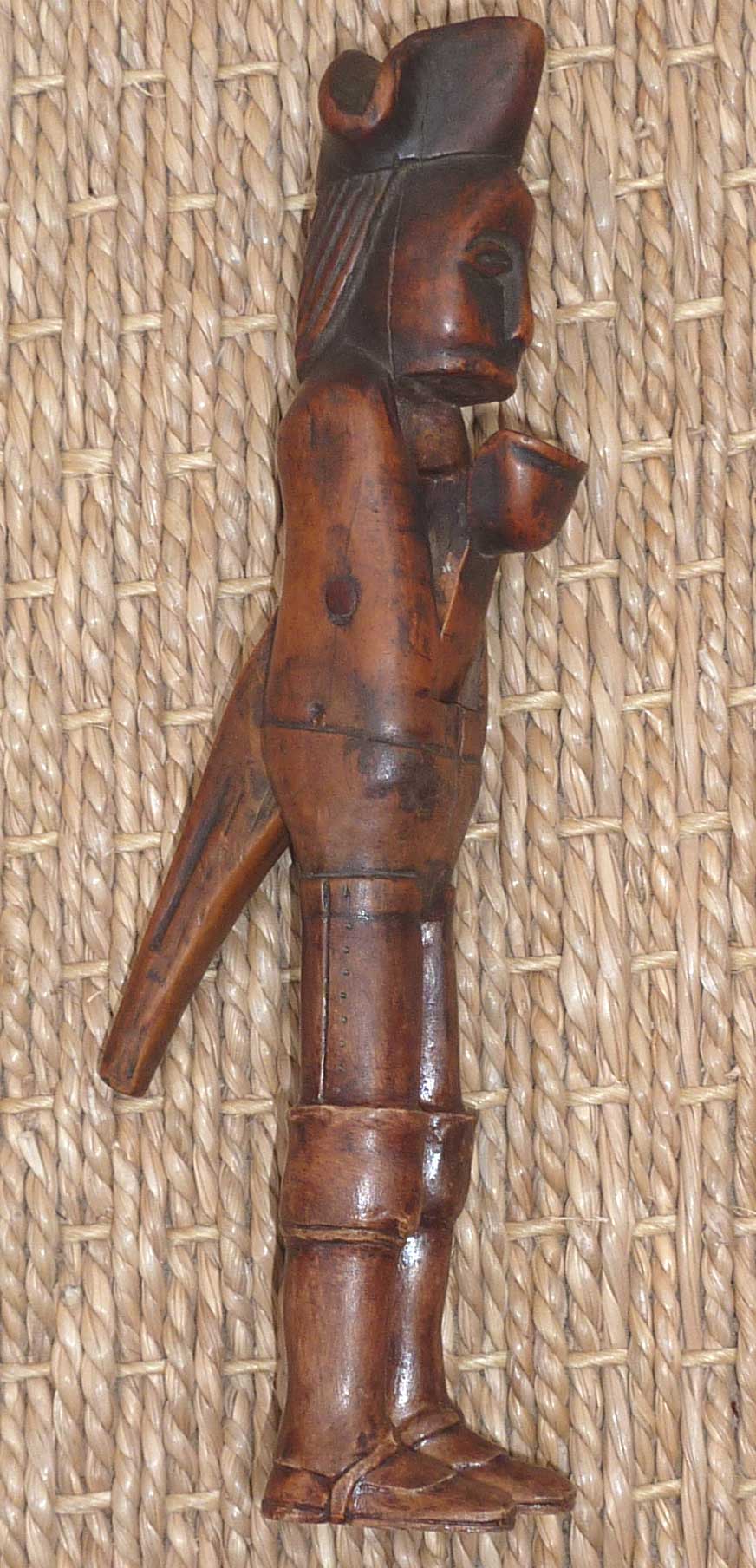
18th century French Soldier nutcracker. This was expertly restored for me by Brandon Etto of Ardoria Studios in Cleveland, Ohio.
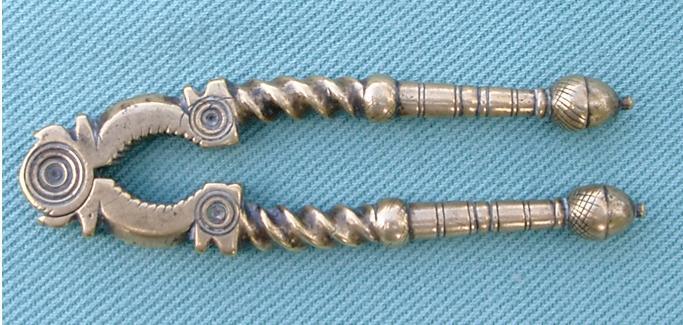
A companion to this brass lever English nutcracker is in the Museum of London, dated '1711'.

English treen nutcracker with the name 'SARAH' and the date '1789'.
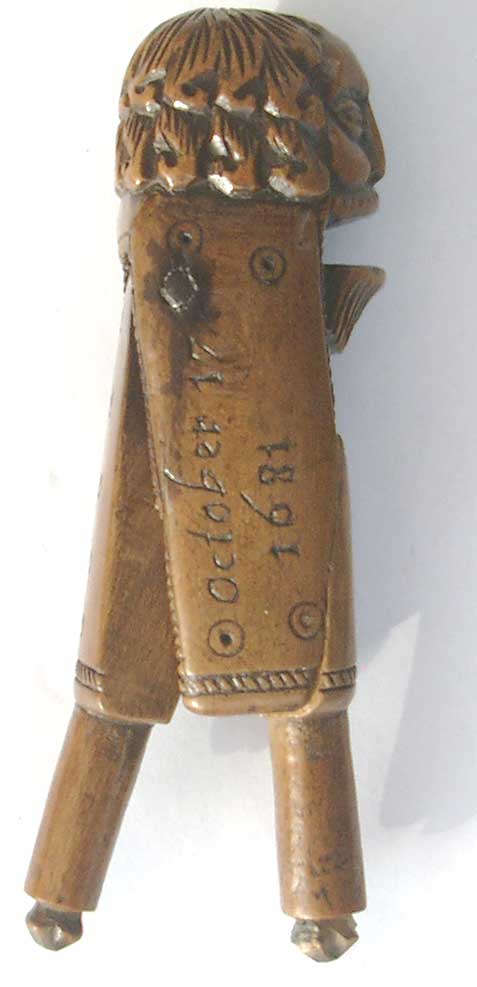
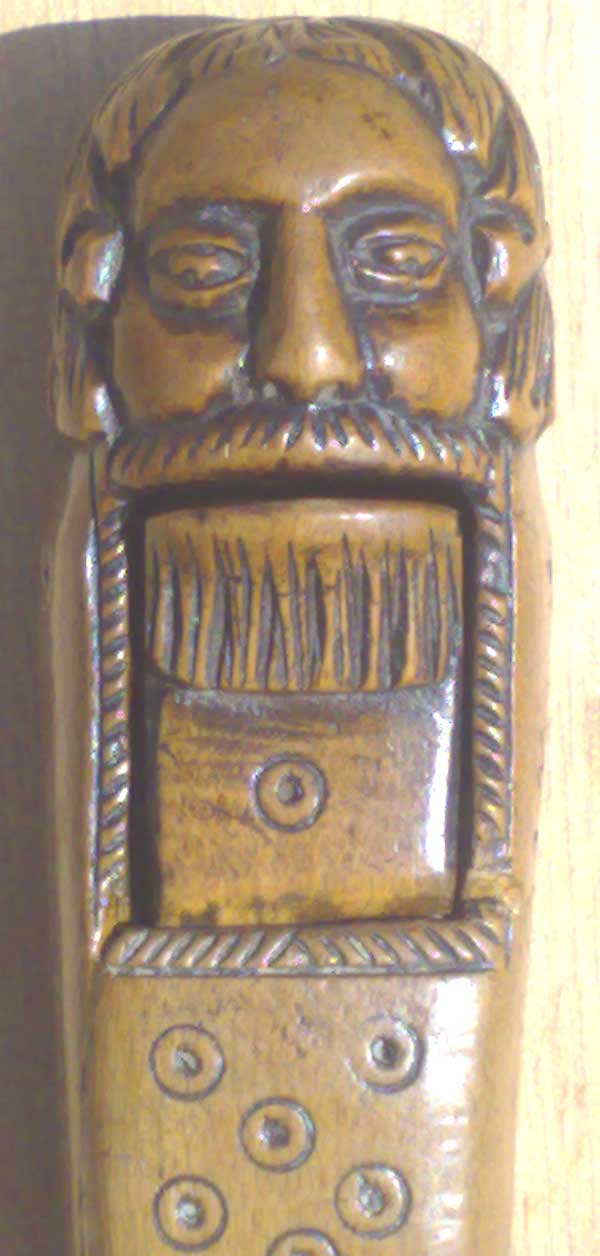
Rare and early English lever nutcracker dated '1681'.

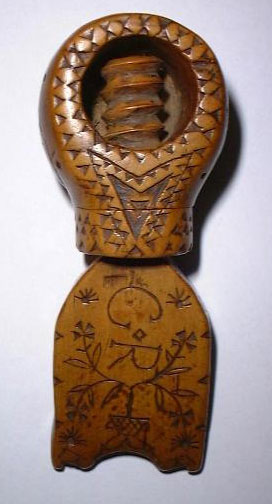
French boxwood screw cracker inscribed '1795', 'GR'.
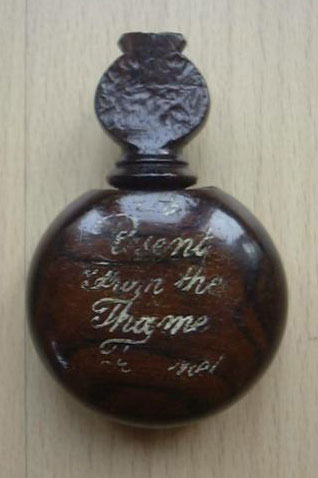
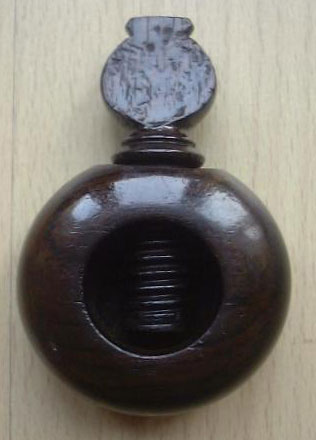
The inscription on this rosewood cracker reads 'A Present from the Thames Tunnel'. This London tunnel was opened in 1840.
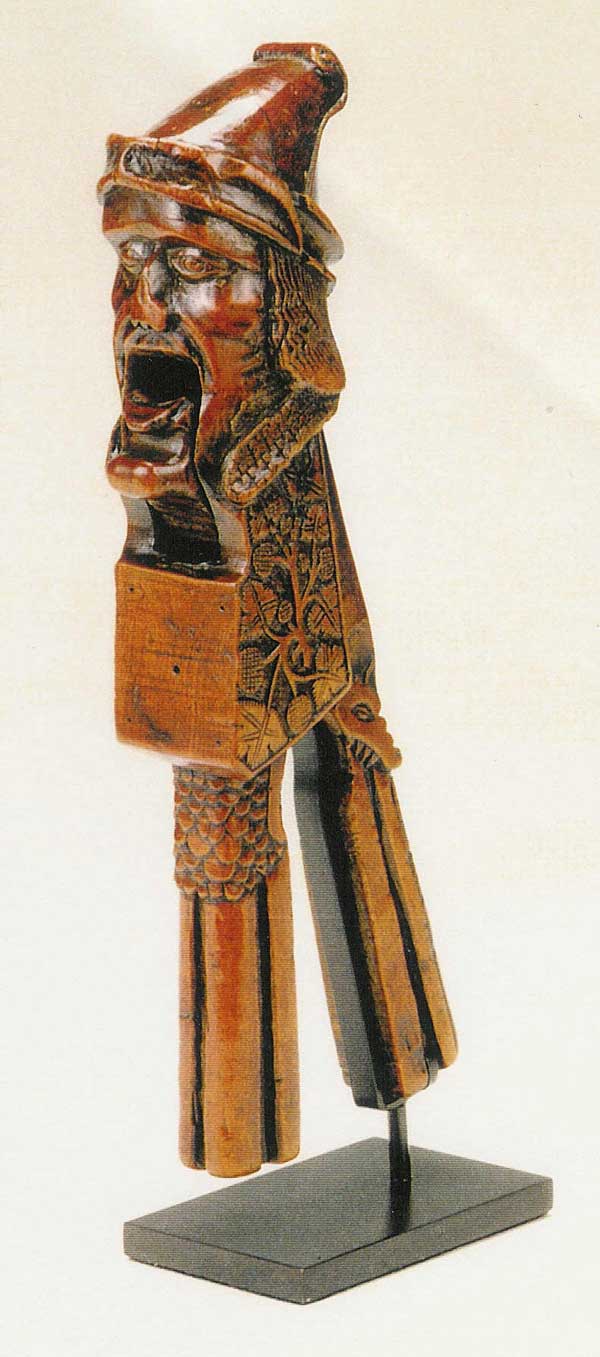
This fantastic boxwood nutcracker is probably French and dates from the early 16th century. It is reputed to have been the property of Wynkyn De Worde who took over the printing device (i.e. logo) of the printer William Caxton which appears on the rear handle.
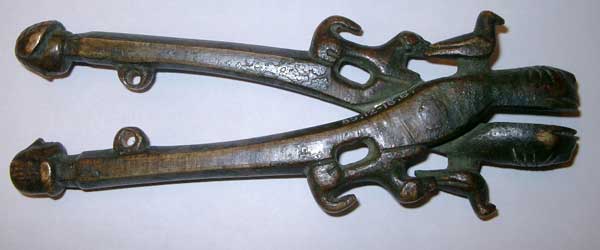
Another early example, probably German or French, 14th or 15th century.

Spanish lever nutcracker from the 17th century, used for cracking pine nuts.
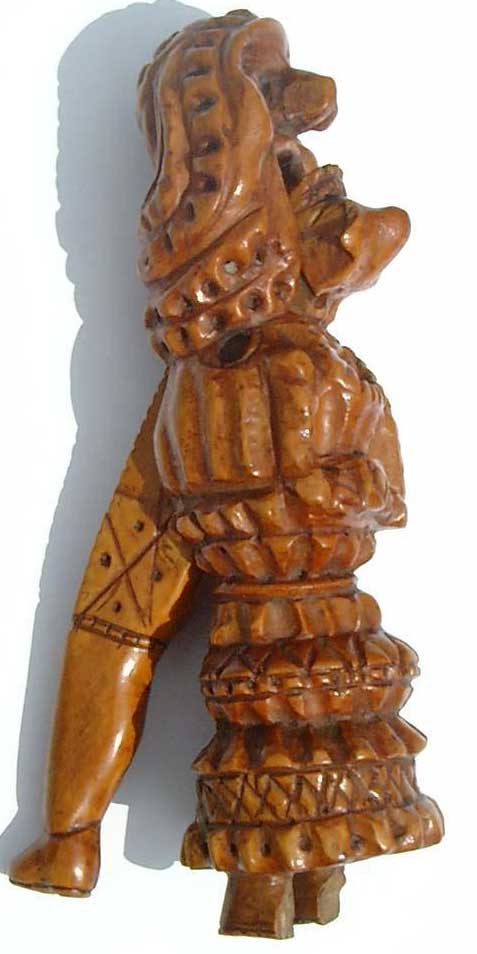
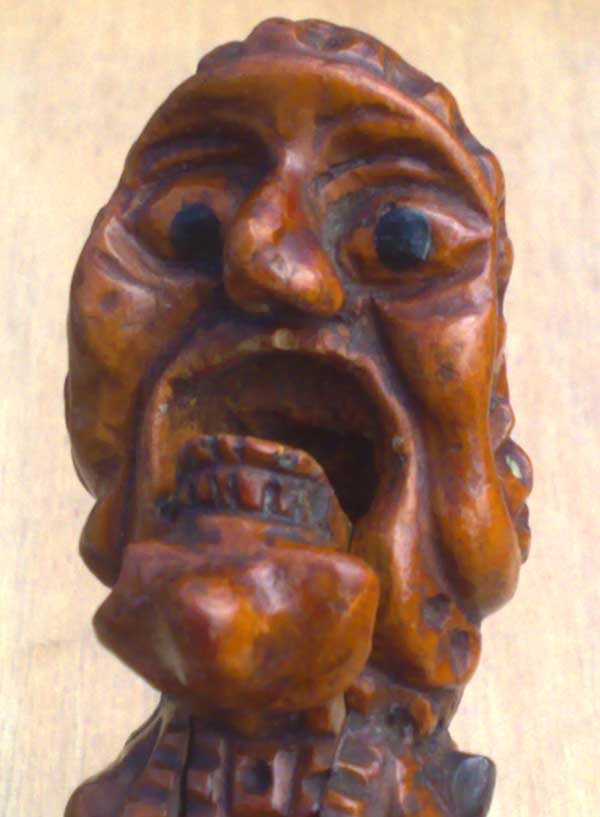
Grotesque woman in boxwood, English or French, late 17th century.
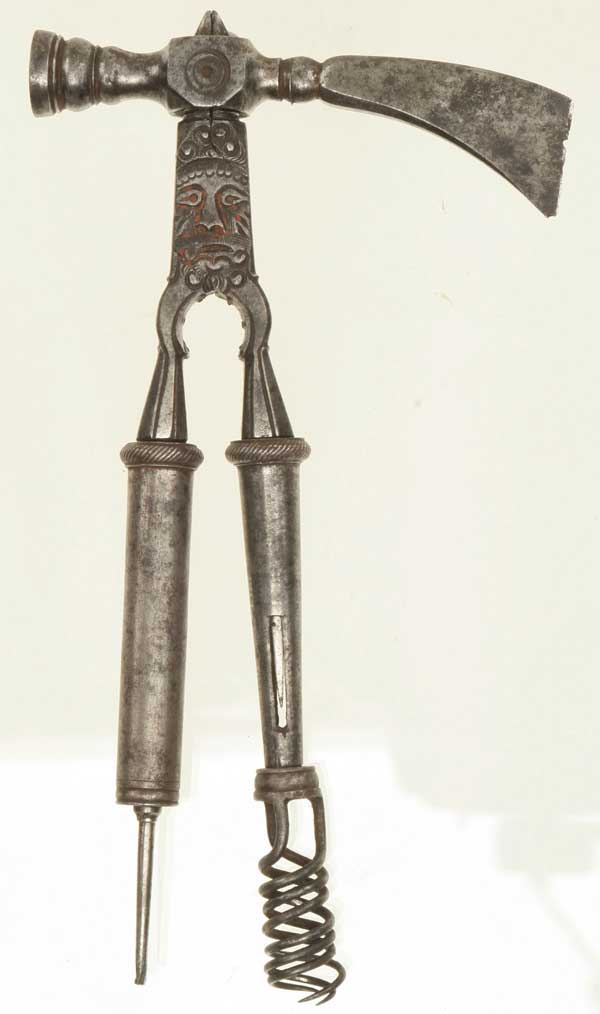
Combined nutcracker and 'gun tool', probably German and 17th century.
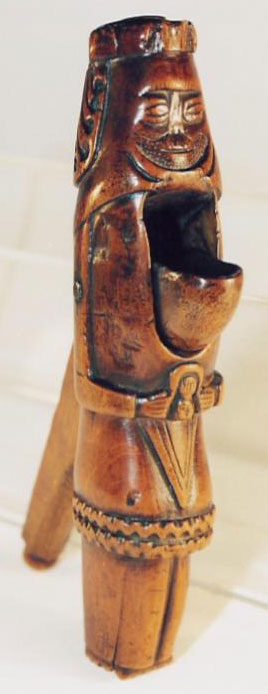
This 18th century French cracker depicts a woman who appears to be holding a tiny stylised baby between her hands.
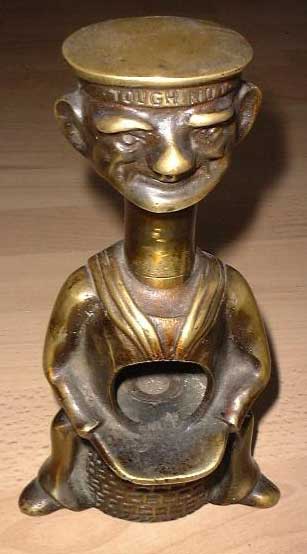
English 'Tough Nut' cracker in brass. This is a rare example of a percussion nutcracker - pushing down on the sailor's head breaks the nut placed in his belly. It is more commonly found in cast iron.
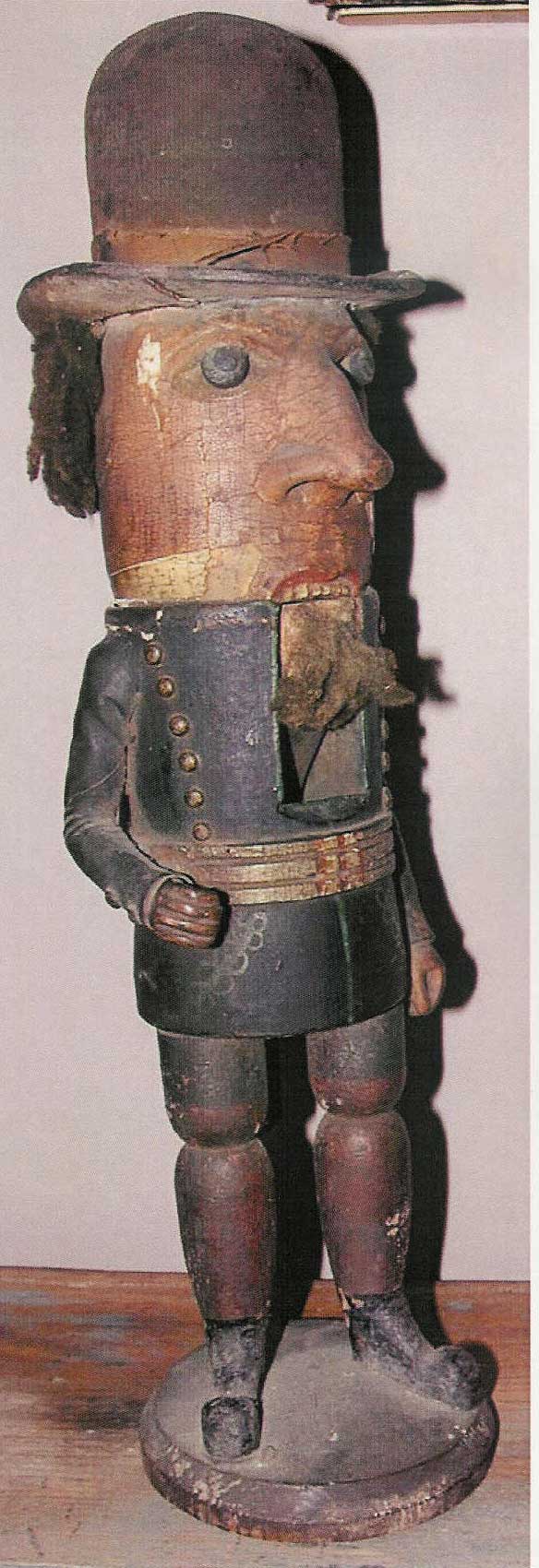
There is a thriving collectors market in 20th
century ‘toy soldier’ type nutcrackers often made in
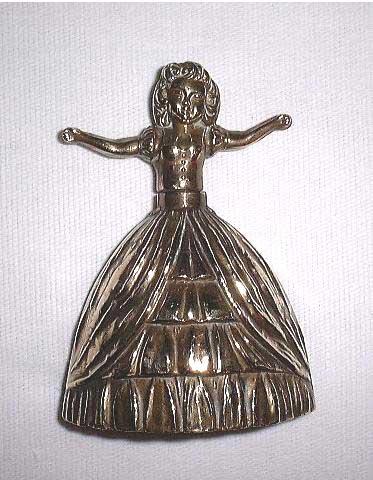
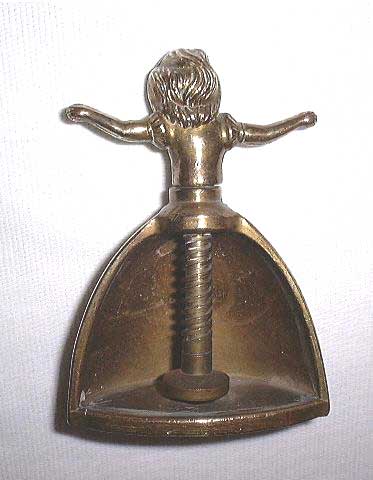
English 20th century screw nutcracker, very similar in form to 'lady bells'.
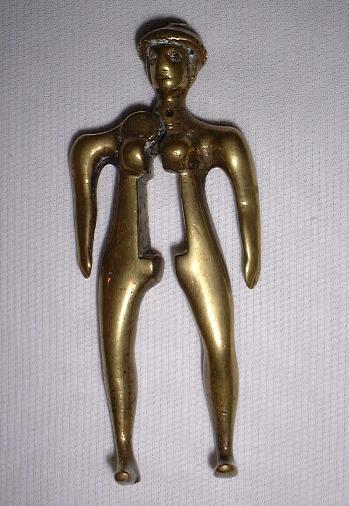
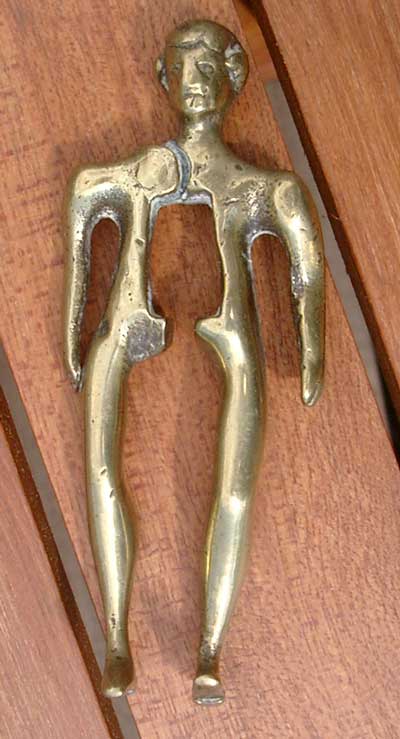
Two 18th century Dutch brass nutcrackers, the first a woman, the second a man. There is a wide variety of lever nutcrackers which use human legs to crack the nut.
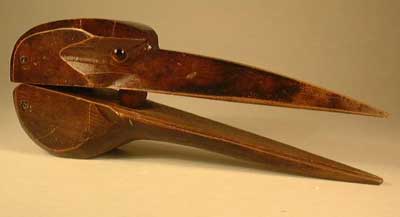
A large (27 cms long) English bird nutcracker with glass eyes.
Unusual 20th century cracker which uses a circular squeezing pressure to crack the nut.
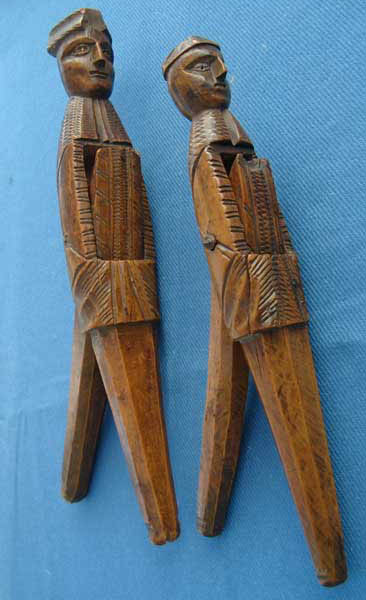
Pair of 18th century French (Alsace region) nutcrackers.
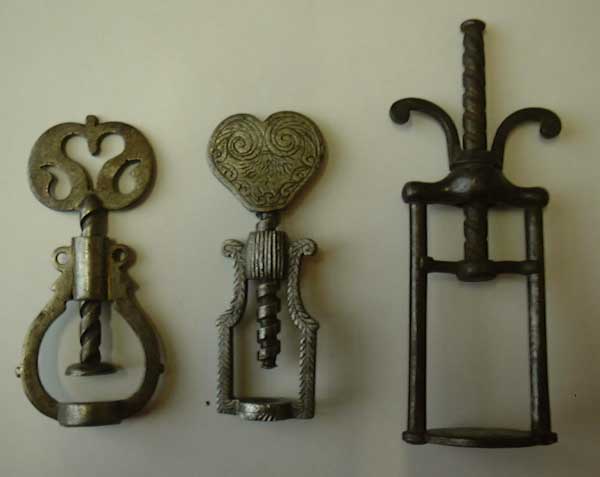
Three English screw crackers from the late 17th and early 18th centuries.
This section of the website contains images of nutcrackers that for one reason or another are interesting to most collectors. This sometimes means that they are rarer than most (and therefore more valuable) but this isn't necessarily always the case.
Please page down.
Please Scroll Down
